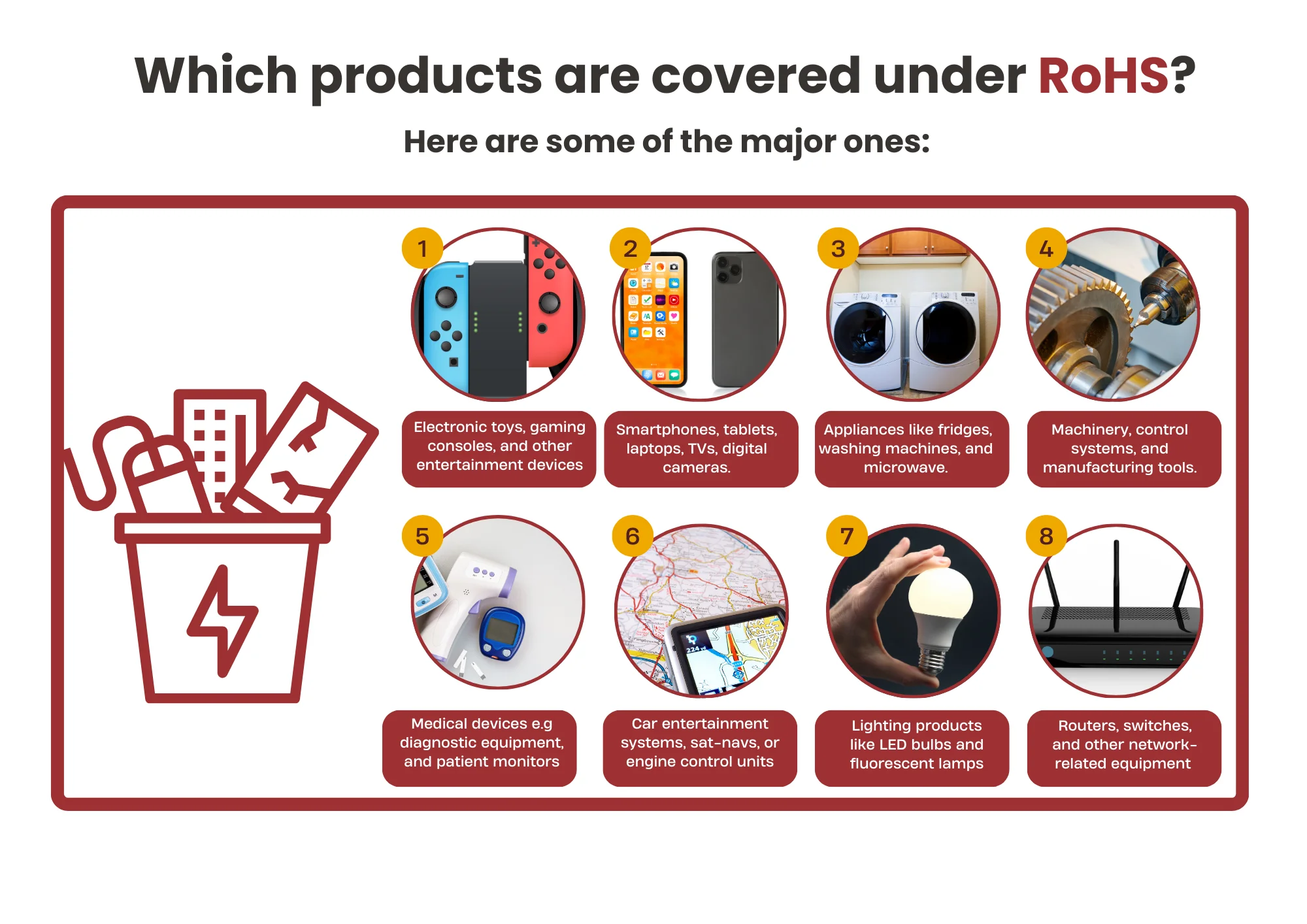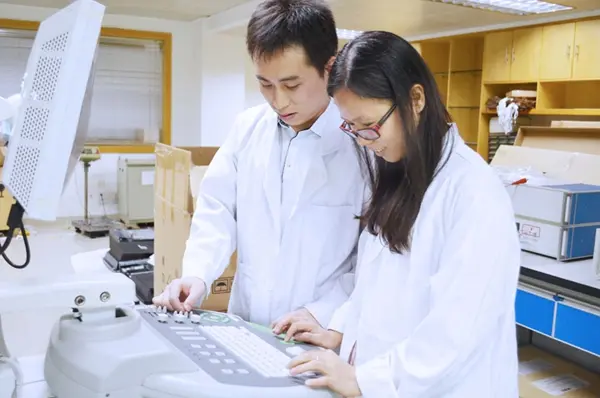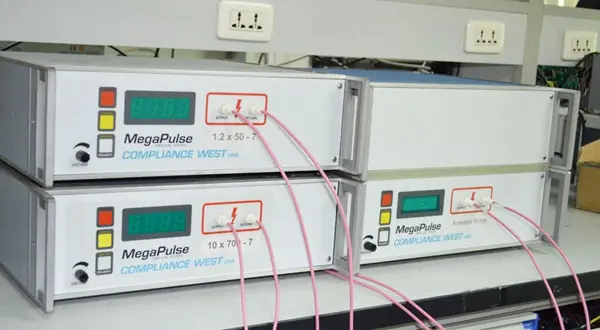
What is Radiated Emission Test?
What is the radiation (RE) test :
The radiated emission test measures the radiation disturbance field strength of the EUT through space. It can be divided into magnetic field radiation and electric field radiation. The former is for lamps and induction cookers, while the latter is widely used. In addition, there are power radiation emission requirements (called disturbance power) for auxiliary equipment of household appliances, power tools, and AV products .
EMC radiation (RE) test standards
CISPR22/EN55022 (information technology products), CISPR13/EN55013 (audio products), CISPR11/EN55011 (engineering, science and medicine), CISPR14-1, CISPR15/EN55015 (lamps), YY0505, GB/T 18268, GB 4824, CISPR15 (lamps with working current frequency exceeding 100Hz), CISPR11 (induction cookers), CISPR14-1 (except for some equipment with working frequency not exceeding 9kHz), CISPR13 (only for auxiliary equipment).
EN 55022 is a modified derivative of CISPR 22 and, as the name suggests, applies to Information Technology Equipment (ITE), giving procedures for measuring the levels of spurious signals generated by ITE and setting limits in the standard for the protection of radio services in industrial, commercial or residential environments.
The standard was produced by CENELEC, the European Committee for Electrotechnical Standardization. CENELEC is the European organization responsible for standardization in the field of electrotechnical technology.
EMC radiation (RE) test method:
1) Radiated emission test instruments and equipment:
a) Electric field radiation: receiver (below 1G), spectrum analyzer (above 1G), anechoic chamber, antenna (below 1G generally uses a combination of biconical and logarithmic periodic or broadband composite antenna, above 1G uses a horn antenna);
b) Magnetic field radiation: receiver, three-loop antenna or single small loop long antenna;
c) Disturbance power: receiver, power absorbing clamp.
The receiver complies with the requirements of CISPR16-1-1, the antenna and site comply with the requirements of CISPR16-1-4, and the absorbing clamp complies with the requirements of CISPR16-1-3.
What is CISPR 22
CISPR 22 is the CISPR standard for Information Technology Equipment - Radio disturbance characteristics - Limits and methods of measurement.
CISPR 22 has been adopted by most members of the European Community.
Relationship between CISPR 22 and FCC certification :
1. With the widespread use of CISPR 22 in the European Community, it is usually necessary to link it with other standards, mainly FCC, the Federal Communications Commission of the United States. The fcc part 15 standard is used here.
2.To ensure that either standard can be used to certify digital electronic devices, FCC Part 15 and CISPR 22 have been relatively harmonized, although there are some differences.
3. CISPR 22 distinguishes between Class A and Class B devices, and it gives conducted and radiated emission data for each class. In addition, CISPR 22 requires conducted emission certification in the frequency range of 0.15 MHz to 30 MHz. In these aspects, there are differences between CISPR 22 and FCC Part 15.
4. In addition, CISPR 22 does not specify limits for frequencies above 1.0 GHz. CISPR limits are in dBμV, while FCC limits are in μV, which means that a direct comparison requires a simple conversion.
5. In terms of similarity, the conducted and radiated emission limits specified in CISPR 22 and FCC Part 15 are close to each other, i.e., within a few dB of each other at the detailed frequencies, in this way, both standards can be easily met during the certification process.
CISPR 22 Class A Conducted EMI Limits | ||
Transmitting frequency (MHZ) | Conduction limit (DBΜV) | |
Quasi-peak | average | |
0.15 - 0.50 | 79 | 66 |
0.50 - 30.0 | 73 | 60 |
CISPR 22 Class B Conducted EMI Limits | ||
Transmitting frequency (MHZ) | Conduction limit (DBΜ; V) | |
Quasi-peak | average | |
0.15 - 0.50 | 66 to 56 years old | 56 to 46 years old |
0.50 - 5.00 | 56 | 46 |
5.00 - 30.0 | 60 | 50 |
CISPR 22 Class A 10m radiated EMI limits | ||
Transmitting frequency (MHZ) | Field strength limit (DBΜV/ M) | |
30 - 88 | 39 | |
88 - 216 | 43.5 | |
216 - 960 | 46.5 | |
Over 960 | 49.5 | |
CISPR 22 Class B 3m radiated EMI limits | ||
Transmitting frequency (MHZ) | Field strength limit (DBΜV/ M) | |
30 - 88 | 40 | |
88 - 216 | 43.5 | |
216 - 960 | 46 | |
Over 960 | 54 | |
Email:hello@jjrlab.com
Write your message here and send it to us
 EMC Pre Compliance Testing
EMC Pre Compliance Testing
 PAHs Testing (Food and Textile)
PAHs Testing (Food and Textile)
 Where to Apply for the EU RoHS Test Report?
Where to Apply for the EU RoHS Test Report?
 Children’s Products and Toy Testing
Children’s Products and Toy Testing
 What is a GB 31701 Test Report?
What is a GB 31701 Test Report?
 UN 38.3 Transportation Test
UN 38.3 Transportation Test
 Toxicological Risk Assessment of Medical Devices
Toxicological Risk Assessment of Medical Devices
 How to get the Vacuum Cleaner UL 1017 Test Report?
How to get the Vacuum Cleaner UL 1017 Test Report?
Leave us a message
24-hour online customer service at any time to respond, so that you worry!




